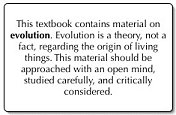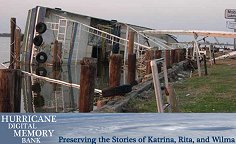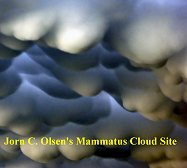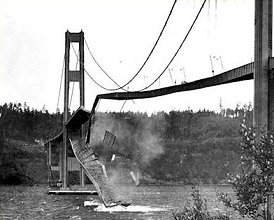
Third European Report on Science & Technology Indicators 2003
European Inter-University Association on Society, Science and Technology
The world is too big for us. Too much going on. Too many crimes. Too much violence and excitement.
Try as you will, you get behind in the race. It's an incessant strain to keep pace and still you lose ground.
Science empties discoveries on you so fast that you stagger beneath them in hopeless bewilderment. Everything is high pressure. Human nature cannot endure much more.
--Editorial in Atlantic Journal, May 16, 1833
There can be little question that the fruits of scientific inquiry and technological innovation rank as the premier shapers of the human condition over the past two centuries. Among the numerous sociological strategies for approaching the relationships between science and technology with self and society is to examine the world views of different generations.
The world of my young sons features two working parents, day care, Nintendo, shopping malls, microwave meals, and a suburban neighborhood filled with kids. They are raised to assume that if one pushes the right buttons the garage door will open or the television comes on, that Dad can be talked to--even though he is miles away--from Mom's car phone, that Grandma can be visited in two hours even though she lives 600 miles away, and that people have walked on the moon and returned home at speeds of 25,000 miles an hour.
Their grandparents were raised in a society of farms and small towns, in which children often worked to help support the family by milking the cows or selling loaves of bread for a dime apiece. They were raised to assume that the human voice can travel via radio waves, that some people have telephones but must wait until others are off the community line to place a call, that grandparents living 600 miles away can be reached in a day and a half by train, and that speeds of 200 miles an hour have been reached in airplanes.
Then there's the perspective of the boys' great-grandparents, who were born in the late nineteenth century when Victoria was the queen of England, or in the early twentieth century during the presidency of Teddy Roosevelt. Most people entered the world not in hospital delivery rooms but in the family home by the light of a kerosene lamp. Most were raised on remote farms on the plains and in the Far West, where they played with imaginary friends, socialized during weekend visits to town, and received their formal education from their parents.
With such generational differences in mind, consider the following graph. It summarizes the results of the 1993 NORC General Social Survey when a random sample of Americans were asked: "In the past 12 months did you record a TV program so you could watch it later?"
Click here to see Having programmed a VCR by age
and education
In its 1988 General Social Survey, NORC
posed the following questions to Americans:
Here are some things that have been said about science. Would you tell
me if you tend to agree or disagree with them?
Responses to the bottom three questions proved to be highly correlated, with SCIMORAL producing the strongest relationships. Let's examine Americans' responses to these with some of the standard predictors from the sociological arsenal. First, looking at the relationships produced by education and age we see how antipathy toward science generally decreasing with education and increasing with age:
PERCENT AGREEING WITH SCIENCE ISSUES
| EDUCATION | AGE | |||||||
| 0-11 YRS | HSGRD | SOME COLL |
4+YRS COL |
18-30 | 31-44 | 45-64 | 65+ | |
| SCICHNG | 59% | 45% | 33% | 21% | 40% | 32% | 42% | 55% |
| SCIPRY | 54 | 40 | 28 | 9 | 27 | 27 | 41 | 49 |
| SCIMORAL | 49 | 36 | 28 | 12 | 33 | 23 | 35 | 45 |
Second, observe how religious faith and religiosity shape Americans' responses. In general, whether or not individuals were strongly religious most affected their responses to SCIMORAL (strongly religious folks were one-third more likely to agree [40%] than those not strongly religious [30%], with those not strongly religious resembling those with no religious affiliation.
PERCENT AGREEING WITH SCIENCE ISSUES BY
RELIGIOUS FAITH AND RELIGIOSITY (STRong, NOT strong)
| FUND PROT | CATHOLIC | MODER PROT | LIBRAL PROT | JEW | NO AFFIL |
||||||
| RELIOSITY | STR | NOT | STR | NOT | STR | NOT | STR | NOT | STR | NOT | |
| SCICHNG | 49 | 45 | 40 | 39 | 33 | 41 | 40 | 38 | 29 | 24 | 30 |
| SCIPRY | 45 | 45 | 40 | 31 | 27 | 27 | 26 | 27 | 14 | 19 | 24 |
| SCIMORAL | 49 | 39 | 39 | 25 | 34 | 22 | 32 | 29 | 0 | 5 | 27 |
To push this analysis further, let's consider the causal model where age, education, religion (limiting ourselves to Protestants and Catholics), and religiosity are predictors of SCIMORAL. We find:

Third European Report on Science & Technology Indicators 2003
European Inter-University Association on Society, Science and Technology



July 2005 marked the eightieth anniversary of the so-called Scopes
Monkey Trial. Despite the fact that the theory of evolution is probably one of the best-tested
and supported of scientific paradigms, a surprising proportion of Americans
do not subscribe to its tenets. (Americans are not the only ones harboring
doubts. (See Turkey's Harun Yahya's Evolution
Deceit: The Scientific Collapse of The Theory of Evolution and Ideological
Background of the Theory.) According to the 1993 NORC General
Social Survey, when asked if "human beings developed from earlier
species of animals" only 15% of American adults said it was definitely
true, 33% said it was probably true, 15% said probably not true, and 37%
said it definitely was not true. Click here to see bearing
of education, religious faith and religiosity on these beliefs. In 2004,
according to the National Center for Science
Education, some forty states were dealing with challenges to the teaching of
evolution. The Scope anniversary was but a warm-up act for the
2009 bicentennial observances of the birth of Charles Darwin--and the
sesquicentennial of the publication of On the Origin of Species.
From the National Science Foundation, "The
Evolution of Evolution." Click here to see
To see the resources anti-evolutionists have online
(thanks to Swarthmore's Colin
Purrington) check out:
THEORY OF
EVOLUTION

ENERGY
![]()
SPACE
 History
of Astronomy
History
of Astronomy
SATURN
JUPITER
MARS
MANNED MISSIONS
TRACKING SATELLITES
 How worried are you about global warming and the so-called "greenhouse
effect?" (See the June 2000 report, "Climate
Change Impacts on the United States: The Potential Consequences of Climate
Variability and Change," sponsored by the U.S. Global Change Research
Project, Global Warming: Early Warning
Signs, Mercury Rising:
Bearing Witness to Climate Change (requires Flash 5 player), and the special reports of
the Intergovernmental Panel on Climate Change.) On the
other hand, there are those, such as the members of the Greening
Earth Society, who view carbon dioxide buildups positively.
How worried are you about global warming and the so-called "greenhouse
effect?" (See the June 2000 report, "Climate
Change Impacts on the United States: The Potential Consequences of Climate
Variability and Change," sponsored by the U.S. Global Change Research
Project, Global Warming: Early Warning
Signs, Mercury Rising:
Bearing Witness to Climate Change (requires Flash 5 player), and the special reports of
the Intergovernmental Panel on Climate Change.) On the
other hand, there are those, such as the members of the Greening
Earth Society, who view carbon dioxide buildups positively.
In the 1993 and 1994 General Social
Surveys, NORC interviewers posed the following question to random samples of
Americans (with % so answering): "Do you think that a rise in the world's temperature
caused by the 'greenhouse effect' is: extremely dangerous for you and your
family (14%), very dangerous (22%), somewhat dangerous (35%), not very
dangerous (15%), not at all dangerous (3%), can't choose (12%)."
Let's explore who was most likely to perceive the greatest danger.
PERCENT SAYING
"EXTREMELY" OR "VERY"
DANGEROUS
BY AGE AND EDUCATION
| AGE | 0-11 YRS | HS GRAD | SOMECOLL | 4+ YRS COLL | TOTAL |
| 18-29 | 51% | 38% | 49% | 44% | 45% |
| 30-39 | 37 | 32 | 42 | 38 | 37% |
| 40-49 | 38 | 33 | 37 | 47 | 39% |
| 50-59 | 30 | 31 | 31 | 34 | 31% |
| 60-69 | 18 | 34 | 30 | 31 | 28% |
| 70+ | 22 | 27 | 38 | 16 | 25% |
| TOTAL | 31% | 33% | 40% | 39% | 36% |
As can be seen, President Clinton had his work cut out trying to convince Americans that there is a climactic crisis and that government intervention is needed. His successor didn't bother. The likelihood of voting increases with age but, as can be seen in the TOTALS column above, concerns are generally inversely related with age. Further, liberals are significantly more likely to believe that rising temperatures are extremely or very dangerous personally (45%) than are moderates (35%) and conservatives (30%). Further, just between 1993 and 1994, the percentage of Americans feeling personally threatened declined from 38.2% to 32.6%.


Inventions have long since reached their limit, and I see no hope for further development.
--Julius Sextus Frontinus, highly regarded Roman engineer of 1st century A.D.
Everything that can be invented has been invented.
--Charles H. Duell, Commissioner of the Patent and Trademark Office
to President McKinley in 1899
 Since the industrial revolution, technology has become a major shaper
of our social organization, our values (abortions, total war, right to
die), our everyday expectations (telephone, jet travel, being plugged into
the world system through satellite networks), our hopes and dreams (interplanetary
travel, universal peace, end of cancer or even of death), the nature of
the work we do, and the style by which we think (new math, computer/calculator
logic, causality). However, a 1994 survey revealed 46% of Americans feeling
that they were being "left behind" by technological change.
Since the industrial revolution, technology has become a major shaper
of our social organization, our values (abortions, total war, right to
die), our everyday expectations (telephone, jet travel, being plugged into
the world system through satellite networks), our hopes and dreams (interplanetary
travel, universal peace, end of cancer or even of death), the nature of
the work we do, and the style by which we think (new math, computer/calculator
logic, causality). However, a 1994 survey revealed 46% of Americans feeling
that they were being "left behind" by technological change.

The year 2003 marks the one hundredth anniversary of flight and the observances are numerous: Inventing Flight: The Centennial Celebration in Dayton, Ohio; the Smithsonian's The Wright Brothers and the Invention of the Aerial Age; and First Flight Centennial Celebration in Kill Devil Hills, NC.
![]()